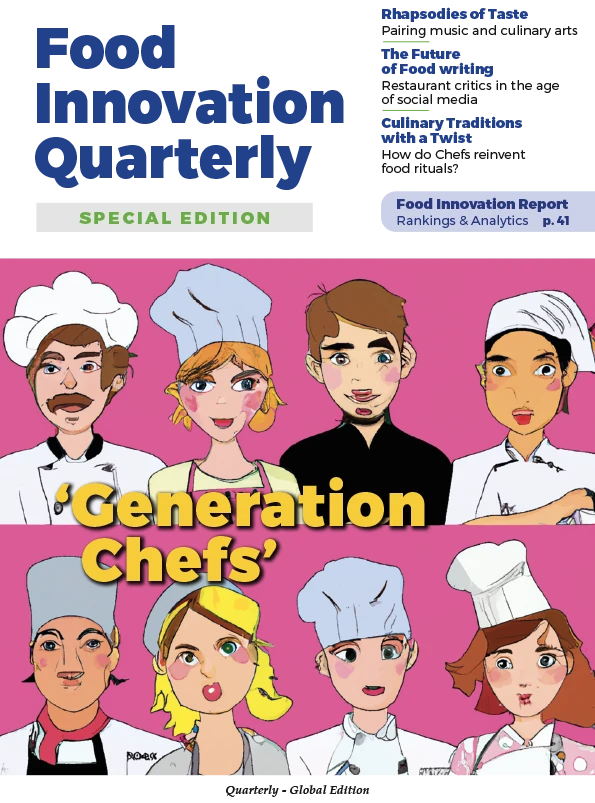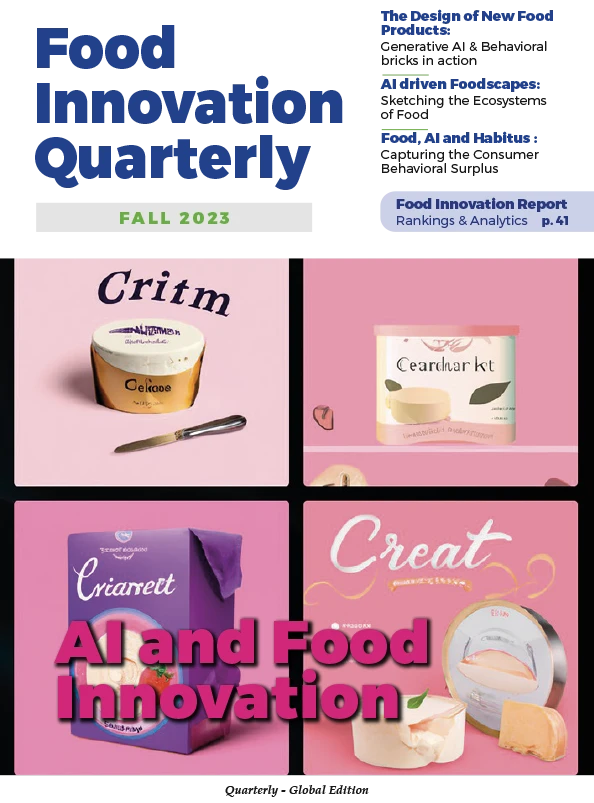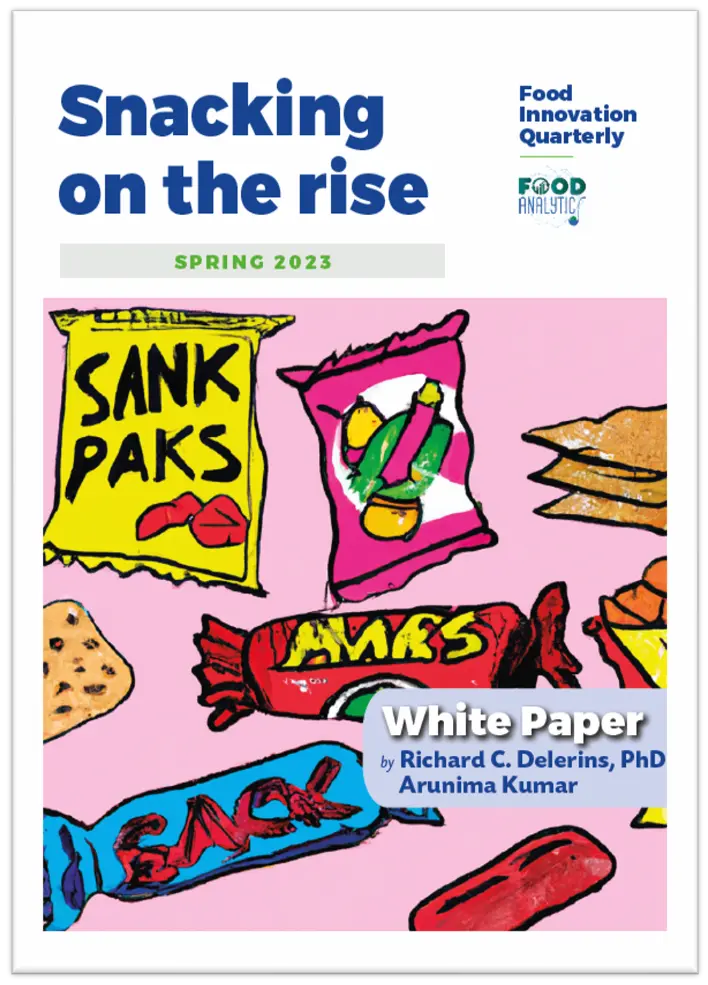Food Innovation Quarterly: Why has food related data become so indispensable? Why is ‘computational gastronomy’ a substantial topic?
Ganesh Bagler: Quite clearly, food is an artistic endeavor. People have been looking at food from an emotional, artistic and a very personal point of view. But, in the 21st century, I believe that we have reached a point where, like many other fields, food also needs to be seen from a data science perspective, and that is where computational gastronomy comes into play. Computational gastronomy is a blend of food data and the power of computation. The idea here is to investigate different aspects of food, such as nutrition, flavor, taste, health etc. from a data science perspective, to come up with better food- better in terms of taste as well as nutrition.
FIQ: Like food, our time sees many topics related to data. Is this going to be long lasting?
GB: My personal viewpoint is that looking at food from a data perspective, or from a data science perspective, is going to have a long-lasting impact on food, food processing, flavors, and other related areas of food. It is not going to be a very transient or temporary fashion, it is here to stay long term and is going to have a long-term impact on the food industry in general.
FIQ: When did you get the idea to start research in this area?
GB: That brings me to my origin story. One might assume that I am a foodie, but that is not so. I am a physicist by training and have a degree in computer science, followed by a PhD in computational biology. That’s what my background and training is all about. My foray into food happened accidentally while teaching in a classroom. I got this idea of investigating the food pairing phenomena in Indian cuisine.
Until 2015, nobody had looked at food from a data science perspective and that is when I started looking at Indian cuisine, Indian recipes, and food pairing patterns in Indian recipes. We observed an interesting phenomenon, that spices are the primary contributors towards the food pairing patterns in Indian cuisine. We built the repositories and algorithms which would go on to create the framework of what we, in retrospect, are calling computational gastronomy. So that’s the serendipitous journey that I have taken into food. It was absolutely not planned, it just happened.
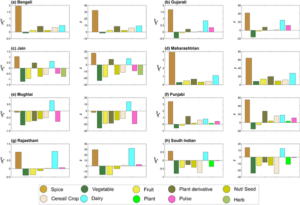
FIQ: Did you coin the term “Computational gastronomy”?
GB: With all due modesty, my Lab members and I are one of the early pioneers of this area and partly responsible for popularizing the term ‘Computational gastronomy.’
FIQ: Do you already have some examples of experiences curated by your algorithm? And did you try the recipes?
GB: That’s a good question. In the last six years we have tried to construct the foundation of computational gastronomy by building data repositories; repositories such as the Recipe.db flavor.db, dietetics and similar databases apart from building algorithms. Have we built algorithms for generating novel recipes? Well, not yet!
Only one research article that we have published so far, attempts to create novel recipes. It is still early stage for that and it is going to take us at least a few more years to be in a realistic zone where we can create recipes which could be tried by chefs, and be palatable and acceptable universally. So, this is a confession that we are at an early stage and novel recipe generation using the data analytics procedures is going to take time.
FIQ: You have mentioned your interest in building an application for a larger audience. Have there been any interesting attempts already?
GB: Right, so along with a few chefs, I have tried to experiment with the food pairing phenomena, especially in the context of Indian cuisine. Some of the chefs have created new combinations to generate new recipes out of them. Remember, this is not art or science, but this is more like taking a cue from science and trying to use chef’s intuition and intelligence as well to create a new recipe. So, we have been able to come up with some interesting combinations and recipes in this process.
FIQ: And did you try the food? Was it good?
GB: Oh yes, I did try some of these recipes myself, which were cooked by my chef friends, and they were definitely likeable.
FIQ: Likeable is not usually a word we would use to describe something mind-blowing, right?
GB: (laugh) I wouldn’t say they were superbly delicious, but definitely likeable, I would say at the moment.
FIQ: Then let’s say it is a good start…
GB: Yes, it’s a good beginning, I must say.
FIQ: Do you think it could be a mess to successfully create combinations with global ingredients’ & flavors? For instance, in France we have lots of regional recipes, and the country is not as even large as China or India…
GB: I get your point but, on the contrary, my presumption is that big data is well structured and rich as opposed to being inundating. It is going to be very much an opportunity for us to learn about how food ingredients are put together in the traditional regional recipes across the world.
Making a repository of international recipes, flavor compounds, and trying to look at health associations, creates an astounding amount of data but at the same time, algorithms that are available today allow us to mine these data down, to try to find patterns which I think will help us. Coming up with new recipes, new ingredient combinations, needs new taste, new flavors.
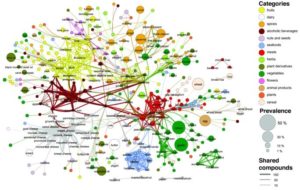
FIQ: Who are your collaborators that make this research efficient? You must have people from tech sciences but do you also someone from food, a nutritionist maybe?
GB: I must say that our team largely comprises of people coming from a computer science, statistics, mathematics background and a bit of biology, nutrition, and food technology background. But we are pretty much open to build a team that incorporates more people from nutrition and food science.
FIQ: And if I may, how was your research funded?
GB: Very good question. I must tell you that this was not at all an easy journey. It has been a very uphill journey that I have taken for the last six years or so. The reason being, nobody likes change. When I Initially started portraying the future of food as something which will be a blend of food, data and computer science, people were not very receptive. They thought that I’m trying to mix art and science together.
Food and cooking are more about art, whereas computer science is about a definitive way of looking at things. So, funding wasn’t easy to come by. Most of the research that I have done is essentially done out of my own funds or the professional development allowance, that I get as a professor.
I was able to conduct my research with the help of a large team of undergraduate students & summer interns. So far, whatever we have been able to develop as part of this computational gastronomy repertoire in my lab has been possible thanks to the students who have contributed for the last six years.
FIQ: Is it the only field you are working on, or is it part of studies that are from other topics?
GB: Historically, as part of my research, and my lab research, I have worked on systems biology and computational biology largely speaking. And within that, I have looked at complex diseases such as cancer, asthma, diabetes, and modeling of molecular interactions of these diseases.
But for the last six years, I have completely focused on computational gastronomy and have practically given up all else. As a researcher I think I’ll be valued more if I create a new media, new niche, as opposed to do something which is routine, something everybody else is also doing.
FIQ: (laughs) Spoken like a true academic. On a different note, how can computational gastronomy help the industry to prepare better food?
GB: Multinational Food & Beverage Companies are taking cue from computational gastronomy to understand the taste preferences of the population. Whether French population has a specific taste preference is something that they are trying to read from the kind of recipes that the French population eats vis a vis the German population versus the Indians and so on. And that way the industry gets its own cues about how to tweak their food products to make them likeable and palatable for their consumers.
FIQ: Right. Restaurants often tailor their food to their customers’ palates. For instance, when English people go to restaurants to eat chicken tikka masala, it is not the original Indian recipe and a spiced-down version. Would computational gastronomy homogenize food around the world?
GB: Culturally speaking, recipes and cuisines have evolved in different parts of the world over time. So yes, chicken tikka masala has been made popular and contextualized within the premise of the British likings, which is less spicy, etc.
Industry will obviously like to exploit and leverage the knowledge that is going to come out of computational gastronomy. The knowledge of recipes, ingredients, composition of flavor, composition, health impact, all of these would be used by the industry to make the most out of it. My only hope is that the industry doesn’t use it in a manner to only click the taste buds of people, to make them like food which is actually not healthy. That’s my only hope.
Homogenization of cuisines is something which is going to happen in the coming times. At the same time, I do want cultures and cuisines to maintain their integrity like French cuisine has. It has got its own identity and I would personally prefer it maintaining it for as long as it can. But some amount of homogenization is something which I do expect, thanks to the intervention by the industry.
FIQ: If we try to look at the future, in 20 or 30 years from now, how do you think people will cook food to sustain themselves?
GB: Well, that is an interesting question. It’s very difficult to predict the future, but I’ll take my guess. My understanding is that, food is going to become more and more personal, as opposed to, guided by cultural preferences. People are going to be more and more choosy about what they eat, not only for the taste reasons, but also for the health reasons.
People have become extremely conscious about the fact that food is one of the primary sources of lifestyle disorders such as obesity, cancer, cardiovascular disorder, and Type two diabetes. And this awareness is going to increase and people will try to see if there are ways by which they can modify their food to make it acceptable to their own individual bodies, as opposed to just driven by cultural practices. Also, my understanding is that food is going to become more and more industrial as time passes. Probably people would be cooking less and less on a day-to-day basis, but for more and more for pleasure.
FIQ: How would you ensure that all generations, regardless of their technical prowess, use an application/computational gastronomy for cooking?
GB: Well, I know that people coming from older generations have reluctance in thinking about computation and food together. However, even these people are using Facebook, Google, posting photographs which is all done with the help of AI.
We might be reluctant to use technology as the basis for creating new recipes up front, stemming from an apprehension about taste. But initially, the technology will only train the intuition of those who seek to create new food pairings, new combinations, to tweak or fiddle with the existing recipes. In a matter of 2-5 years, it wouldn’t be a far stretch to say that a computer will be able to generate an entire recipe all together, which will be liked by you and me. That is the future that I would like to portray to the older generation.
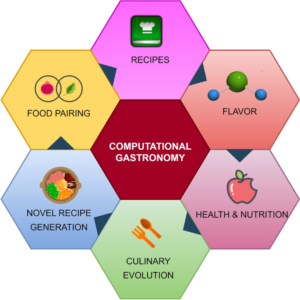
FIQ: Could an application like yours make people understand how to find the greatest harmony of ingredients to nourish the bodies without compromising on taste?
GB: Research that has been done so far is limited and focuses more on the flavor aspect of food than the health impact. However, to be able to come up with the best combination of food, which is likeable, palatable, you know, something which is tasty and at the same time is healthy, is something which is going to take more amount of data to be generated.
For instance, there are interesting researches in personalized nutrition where people have tried to investigate what food will cause what kind of change in the postprandial glucose level. And thereby people have come up with interesting so-called machine learning models, which can predict what recipe, which food should be good for an individual, you and me separately.
Until this, nutritionists believed that the same recipe might cause the same amount of change in the postprandial glucose level, but that doesn’t seem to hold true anymore. You know what is good for me in terms of improving my diabetic condition is not necessarily true for somebody else who is also diabetic. So, such kind of researches which are computational, are also part of computational gastronomy and I believe are going to add to the impetus and we would eventually be able to answer the question, can I eat healthy and tasty simultaneously.
FIQ: In your research with data collecting, did you already find a typical ingredient that is common to every cuisine around the world?
GB: I have not explicitly dugout for any specific ingredient, but for example, onion seems to be one of the very common ingredients which is found across practically all cuisines. Otherwise, we do not have a list of such ingredients so far. We have twenty-six world cuisines and seventy-four country level cuisines in our repository, so maybe we can find an answer to that. But onion seems to be one of the only examples that comes to my mind right now.
FIQ: Would you like to tell us more about your work?
GB: So, the only thing I keep saying in my talks is that I wanted to be an astronomer, but I never could be one. Instead, I ended up being a gastronomer. So that is a journey that I have taken.
This is a quote which comes from Jean Anthelme Brillat-Savarin, the French gastronomer, ‘the discovery of a new dish confers more happiness on humanity than the discovery of a new star’. So, while I have not been able to discover new stars, I believe I am on a journey where I can discover new dishes, that is all I could add to close it.
FIQ: I would ask just one more question, very simply, what did you have for lunch today?
GB: (laughs) So, for lunch I ate rice and dal, a very staple food of India. It’s basically rice and lentils, called dal.
FIQ: I like dal, was it a spicy one?
GB: Well, like the English chicken tikka masala, this dal was not spicy!
Interview by Cyprien Rose for Food Innovation Quarterly



